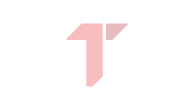The day police and tanks rolled in the streets of Belgrade: 29 years since the March 9 demonstration
Although the cause was the demand for the resignation of TV Beograd (Belgrade) Director-General Dusan Mitevic and of Interior Minister Radmilo Bogdanovic, the protest later turned into an uprising against Slobodan Milosevic
Today marks 29 years since the first major opposition demonstration organized on March 9, 1991 by the Serbian Renewal Movement, SPO, led by Vuk Draskovic, because of the policy of the state-run TV Belgrade towards the opposition.
Although the cause was the demand for the resignation of TV Beograd (Belgrade) Director-General Dusan Mitevic and of Interior Minister Radmilo Bogdanovic, the protest later turned into an uprising against Slobodan Milosevic.
The demonstrations briefly shook the power of Slobodan Milosevic, president of Serbia and leader of the Socialist Party of Serbia, SPS, who ordered 10,000 police officers to be deployed in the streets of the capital, as well as tanks of the Yugoslav People's Army, JNA, who rolled into the streets in the evening.
What was the reason for the protest?
After TV Belgrade broadcast a report stating that the SPO was cooperating with the populist regime in Croatia, Draskovic on February 16 called for a demonstration to take place "on March 9, at noon on Republic Square" - with the protesters' main demand being the sacking of the director of RTS, as well as four of the broadcaster's editors.
The protest, also called "the rally against the five-pointed star," was joined by the Democratic Party and several other opposition parties.
A large number of citizens marched to the square on March 9, shouting "Red bandits" and "Sloba, Saddam" - but the Milosevic regime did not want to allow the demonstrations, so the police blocked access to the square and tried to suppress the participants.
Before the charge of law enforcement officers, opposition leaders took refuge in the National Theater, from there Draskovic addressed the crowd and shouted, "Attack!" Fierce, hours-long clashes began on Belgrade's streets at that point, with the police using batons, tear gas and water cannons.
The demonstrations were broadcast by Studio B, which was soon censored with the program of this TV station but also of B92 going offline. During the evening, at exactly 7:30 pm, tanks appeared in the streets of Belgrade. As the Presidency of the Socialist Federal Republic of Yugoslavia (SFRJ) headed by Borisav Jovic announced, this was done at the request of the Serbian leadership.
The city center was demolished during the riots, while 114 people, 58 police officers and 86 citizens were injured in the clashes, and 158 others got arrested, including Draskovic.
High school senior Branivoj Milinovic (18) and police officer Nedeljko Kosovic (54) were killed. Milinovic was shot dead the when police opened fire on a group of protesters, while Kosovic died while fleeing from protesters after falling from a height of five meters.
However, the March 9 demonstrations did not end that evening, but continued into the following days. As early as March 10, students joined the protesters, starting their march from New Belgrade and managing to break through a police blockade on a bridge, reaching the city center.
Speakers were taking turn on Terazije Square for a few days after that during what was then called "a plush revolution" - until March 14, when all their demands were accepted.
Milosevic tried, unsuccessfully, to respond by organizing a "counter-rally" at Usce, but in the end he still had to fulfill the demand to dismiss state TV director Dusan Mitevic and his leading people, who resigned.
Interior Minister Radmilo Bogdanovic also resigned.
(Telegraf.rs)

